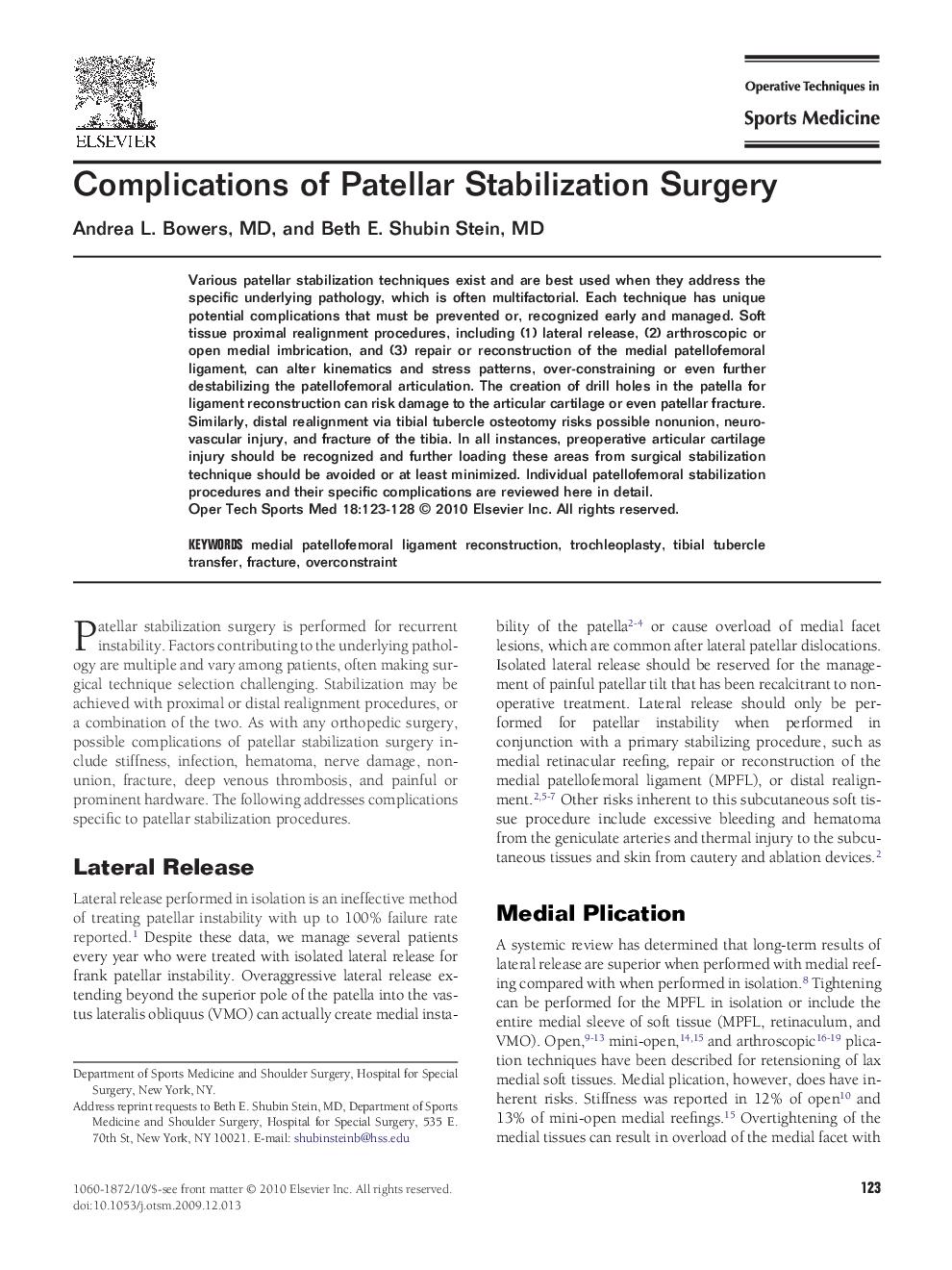| Article ID | Journal | Published Year | Pages | File Type |
|---|---|---|---|---|
| 4079752 | Operative Techniques in Sports Medicine | 2010 | 6 Pages |
Various patellar stabilization techniques exist and are best used when they address the specific underlying pathology, which is often multifactorial. Each technique has unique potential complications that must be prevented or, recognized early and managed. Soft tissue proximal realignment procedures, including (1) lateral release, (2) arthroscopic or open medial imbrication, and (3) repair or reconstruction of the medial patellofemoral ligament, can alter kinematics and stress patterns, over-constraining or even further destabilizing the patellofemoral articulation. The creation of drill holes in the patella for ligament reconstruction can risk damage to the articular cartilage or even patellar fracture. Similarly, distal realignment via tibial tubercle osteotomy risks possible nonunion, neurovascular injury, and fracture of the tibia. In all instances, preoperative articular cartilage injury should be recognized and further loading these areas from surgical stabilization technique should be avoided or at least minimized. Individual patellofemoral stabilization procedures and their specific complications are reviewed here in detail.
